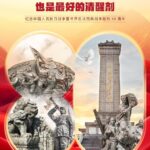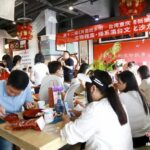The project «Chongqing Explores a Comprehensive Approach to Micro-Renovation to Advance the Renewal of Old Districts» has been selected among 22 innovative practices to be replicated nationwide, according to a list issued by the Ministry of Housing and Urban-Rural Development.
On May 29, at a press conference titled «Embracing a New Mission, Writing a New Chapter» — «City Renewal Action Plan,» it was announced that Chongqing has been successfully chosen as one of the first pilot cities to receive central financial support for urban renewal. Currently, many of Chongqing’s practices have been incorporated into high-level national policy development, and urban renewal is showing positive momentum.
Cumulative renovation and renewal of 65,000 households in hazardous urban housing
According to preliminary data, the city insists on renewal to benefit residents and revitalize the urban living environment. Citywide, the renovation and reconstruction of 65,000 hazardous urban homes have been completed. Plans are in place to address potential safety hazards in the exterior walls of urban residential buildings; by 2024, 4,500 kilometers of gas, sewage, and water pipelines will be renewed. Simultaneously, the advancement of digitalization and intelligent management of underground pipelines will effectively eliminate safety risks related to aging networks and gas leaks. In total, the renovation of old urban and colonial districts has covered 21 million square meters, with 80 downtown village renewal projects completed, benefiting 220,700 households. Additionally, 67 street renewal projects have been implemented, 61 kilometers of waterfront management completed, 817 kilometers of urban recreational trails constructed, and over 400 kilometers of «clean water, green banks» riverfronts established.
To stimulate the vitality of new urban spaces, the city has adopted a «micro-renovation» model, systematically renewing residential, street, and factory areas, implementing 15 demonstration projects to improve functional quality. Through zonal resource integration, project linkage, and comprehensive fund utilization, the city has organically combined «scenery at the doorstep» with «income at the doorstep.»
To support high-quality urban renewal development, the city has also formulated the «Chongqing Central Urban Area Renewal Plan.» Aligning with central urban planning, the plan establishes a «point-line-plane» spatial renewal structure, identifying 328 key renewal zones in old residential, commercial, factory, and street areas, covering 137 square kilometers. It integrates 134 renewal zones, promoting functional, protective, and safety-oriented renewal by category.
Pioneers in full coverage of three-tier elderly care service networks
Currently, the proportion of elderly residents in old districts of Chongqing’s central urban area exceeds 30%, significantly higher than the citywide average of 24%. To enable seniors to enjoy a happy life in their later years, the city’s civil affairs department, aiming to create a «15-minute elderly care service circle,» has launched three major initiatives.
At the city level, efforts to establish a three-tier elderly care service system have resulted in 52 district-level centralized care centers for the disabled and critically ill, 220 street-level elderly service centers, and 2,871 community elderly service stations. This marks the first step in building a foundational three-tier elderly care network in western and central regions.
At the community level, initiatives to revitalize underutilized assets have begun, combining reforms under the «Three Support Points, One Revitalization Point» strategy. The systematic use of 6.78 million square meters of idle community shops and kindergartens has facilitated the construction of elderly care complexes, senior dining halls, and universities for the elderly, allowing seniors to conveniently access care nearby.
At the household level, modifications to improve living conditions for the elderly have provided over 40,000 senior households with safety features such as handrails, grab bars, shower seats, and health monitoring devices. Fall prevention installations, emergency call devices, and home care services for over 8,000 mobility-impaired seniors have created a safe, comfortable, and barrier-free living environment.
This year, 1,227 old district renewal projects launched
For five consecutive years, old district renewal has been included in Chongqing’s key livelihood projects. Last year, the city initiated 2,620 new old district renewal projects, directly benefiting over 570,000 households. This year, the city is launching an additional 1,227 projects, allowing even more residents to benefit.
In the old district renewal process, Chongqing avoids a «one-size-fits-all» approach, instead creating tailored renewal plans for each district, using «custom-fit» strategies to precisely address pain points. To date, the city has repaired 17.05 million square meters of exterior walls, added over 63,000 new parking spaces, created




